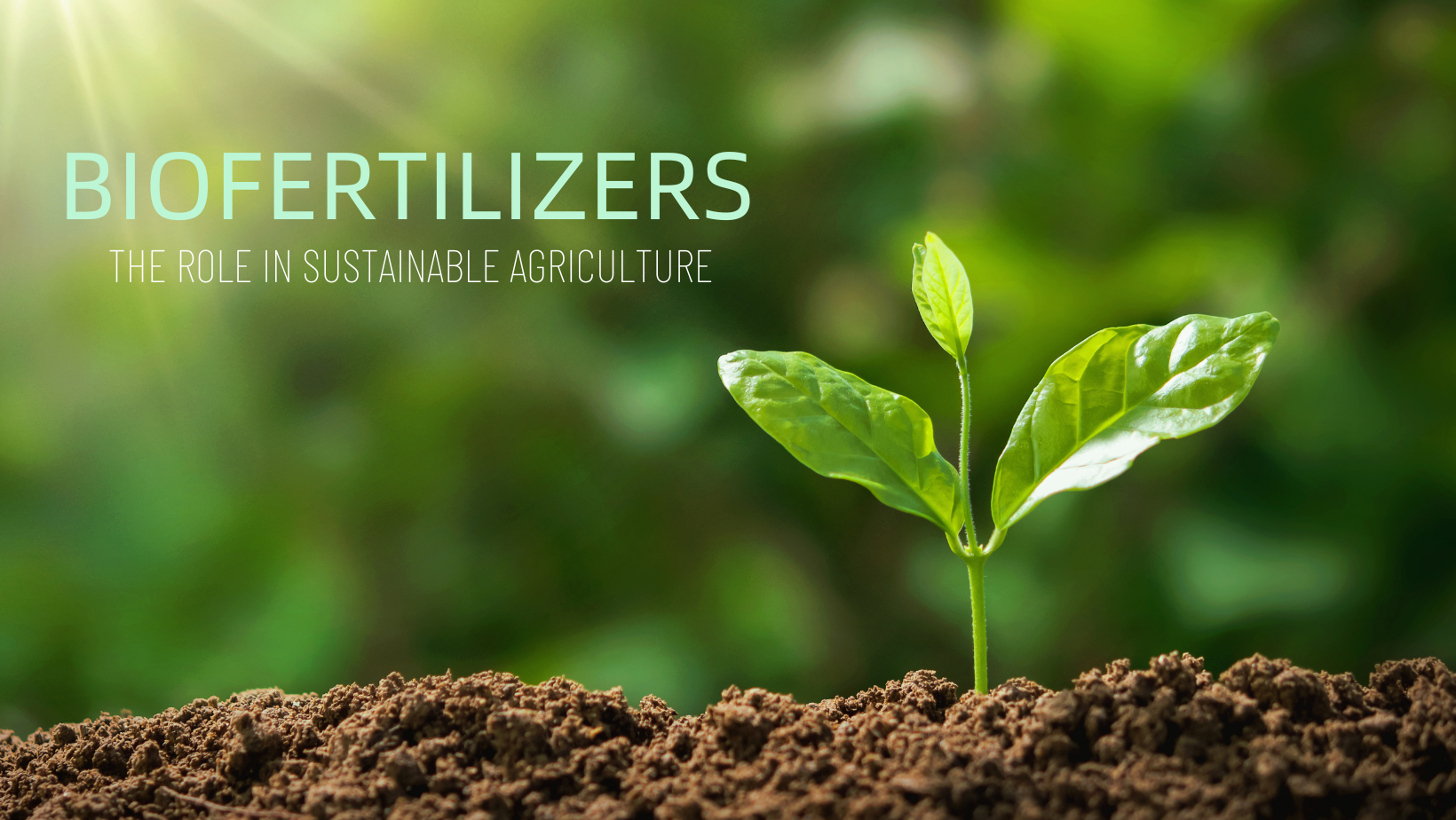Biofertilizers are nature’s eco-friendly boost for plant growth. Unlike traditional fertilizers, these living microorganisms form a beneficial alliance with plants, enhancing nutrient absorption and overall vitality. They come in various types, from nitrogen-fixing bacteria to phosphorus-solubilizing fungi, each contributing to a healthier and more sustainable agriculture. By embracing biofertilizers, we’re not just nurturing crops; we’re fostering a greener planet for generations to come.
Biofertilizers are created in laboratories using live or dormant cells of organisms. Microbial strains showing plant growth-promoting rhizobacterial (PGPR) activities can be isolated from different agro ecological zones which are utilized to develop biofertilizers. These can include nitrogen-fixing bacteria, phosphate-solubilizing microbes, cellulose-degrading microorganisms, growth-promoting agents, and more. They are then applied to seeds or plants with the goal of enhancing their growth.1 In this article, we delve into the significance of biofertilizers and their pivotal role in fostering sustainable agriculture and environmental well-being.
As we talk about the importance of bio fertilizers, it is essential to understand the difference between biofertilizers and organic fertilizers, which can often be considered as one. Organic fertilizers and biofertilizers may sound similar, but they have distinct differences. Biofertilizers are made from living microorganisms, such as bacteria and fungi, which form beneficial relationships with plants to enhance nutrient absorption and growth. While both aim to improve soil fertility, organic fertilizers directly supply nutrients, whereas biofertilizers work by fostering symbiotic relationships between plants and helpful microorganisms. So, in essence, organic fertilizers are derived from natural materials, while biofertilizers harness the power of living organisms to boost plant health.2
In many regions of the world, the usage of microbial inoculants or biofertilizers has significantly expanded within the past 20 years.3 Biofertilizers are considered as a feasible and sustainable attractive biotechnological alternative. Unlike traditional fertilizers, biofertilizers enhance soil fertility naturally. This not only promotes nutrient absorption but also contributes to improved soil structure, water retention, and overall ecosystem health. Due to its high nutrient content, only relatively small amounts are required for crop development and growth. Studies emphasize the potential of biofertilizers in enhancing crop yields while minimizing ecological footprint. By incorporating biofertilizers, farmers can cultivate resilient crops, reduce dependency on synthetic inputs, and contribute to a more sustainable and environmentally conscious agricultural paradigm.4,5
The advantages of integrating biofertilizers into crop cultivation extend beyond environmental considerations, delving into the realm of improved plant health and disease resistance. A 2018 study highlights that certain biofertilizers, like phosphate-solubilizing bacteria and mycorrhizal fungi, play a crucial role in enhancing plant defense mechanisms. This not only reduces the need for chemical pesticides but also fosters a holistic approach to sustainable agriculture.6
In the quest for sustainable agriculture, the adoption of biofertilizers becomes a compelling imperative for agricultural nations. In Sri Lanka, a biofertilizer named “Biofilm” was successfully developed by scientists from the National Institute of Fundamental Sciences. The main large scale crop cultivations such as paddy, tea, vegetables and maize can have great benefits from using biofertilizers. Considering the demand for food, and other factors such as pest resurgence, chemical residues in food, feed, soil, air, and water resulting in human health hazards and ecological imbalances, shifting towards biofertilizers is a safe,sustainable and meaningful alternative.7
It is time that institutes, research labs, and governments take steps to accelerate the adoption of biofertilizers by collaborating on research, optimizing formulations, and integrating sustainable agriculture practices into education. Governments play a vital role by providing financial incentives and regulatory support, fostering a conducive environment for biofertilizer production and adoption. Beyond the conventional practices that rely on synthetic fertilizers, biofertilizers offer a pathway to an ecologically harmonious future. By cultivating a synergy between crops and beneficial microorganisms, biofertilizers not only enhance soil fertility but also minimize the environmental toll of chemical-intensive farming.
This paradigm shift isn’t just a choice; it’s a profound rethinking of our agricultural practices, prompting us to ponder: Why not embrace a method that not only nourishes our crops but also nurtures the very Earth we depend on for sustenance?
References
- Zambrano-Mendoza, J.L. et al. (2021) Use of Biofertilizers in agricultural production, IntechOpen. Available at: https://www.intechopen.com/chapters/76918 (Accessed: 24 January 2024).
- Dr.Samanthi (2022) What is the difference between organic and Bio Fertilizer, Compare the Difference Between Similar Terms. Available at: https://www.differencebetween.com/what-is-the-difference-between-organic-and-bio-fertilizer/#:~:text=and%20Bio%20Fertilizer%3F-,Organic%20fertilizer%20is%20a%20natural%20fertilizer%20that%20contains%20plant%20or,cells%20of%20effective%20microbial%20strains. (Accessed: 24 January 2024).
- Nath Yadav, A. (2017) ‘Plant growth promoting bacteria: Biodiversity and multifunctional attributes for Sustainable Agriculture’, Advances in Biotechnology & Microbiology, 5(5). doi:10.19080/aibm.2017.05.555671.
- Bhattacharyya, P., Roy, K. S., & Das, D. (2015). Microbial diversity in soil: Effect of pesticide, pH and organic amendment. Journal of Microbiology and Biotechnology Research, 1(1), 29-37
- Verma, P. and Pandey, K. (2023) ‘Biofertilizer: An ultimate solution for the sustainable development of Agriculture’, Current Agriculture Research Journal, 10(3), pp. 193–206. doi:10.12944/carj.10.3.04.
- Gouda, S., Kerry, R. G., Das, G., Paramithiotis, S., Shin, H. S., & Patra, J. K. (2018). Revitalization of plant growth promoting rhizobacteria for sustainable development in agriculture. Microbiological Research, 206, 131-140. doi:10.1016/j.micres.2017.08.016.
- Biofilm Biofertilizer (no date) Home. Available at: https://www.nifs.ac.lk/node/822 (Accessed: 24 January 2024).

